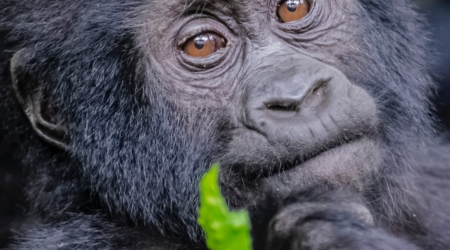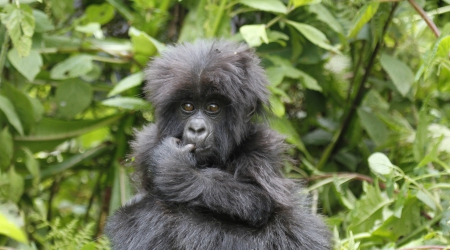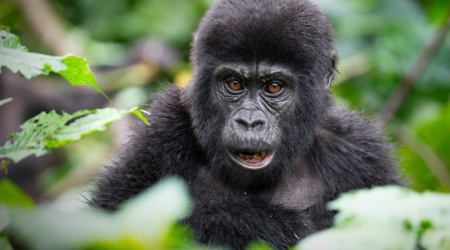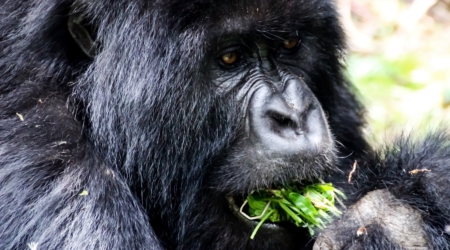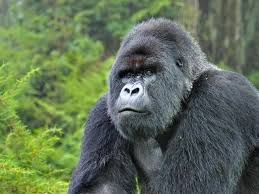An unlikely question has captivated the internet recently: Could one hundred men defeat a full-grown silverback gorilla?
While the debate generates plenty of amusement, it opens a gateway into serious reflection.
Silverback gorillas represent one of the most extraordinary expressions of natural strength and power. Their abilities have shaped countless conservation efforts, safari experiences, and wilderness expeditions across Central and East Africa.
This article will present a detailed, factual view of silverback strength. It will explore how their power compares to human strength and why their presence continues to anchor global ecotourism initiatives.
Prepare to meet the real force behind the myths.
Meet the Silverback Gorilla
A silverback gorilla presents a body shaped for dominance. Adult males typically weigh between 136 to 200 kgs (300 and 450 pounds). Their upright standing height ranges from five and a half to six feet.
Massive arms extend longer than the legs, with arm spans reaching over eight feet. Thick muscles layer across the chest, back, and shoulders, giving them exceptional pulling strength and explosive power.
Their jaws house 32 large teeth, including powerful canines. These teeth, paired with a bite force reaching 1,300 pounds per square inch, serve critical roles in defence and dominance displays.
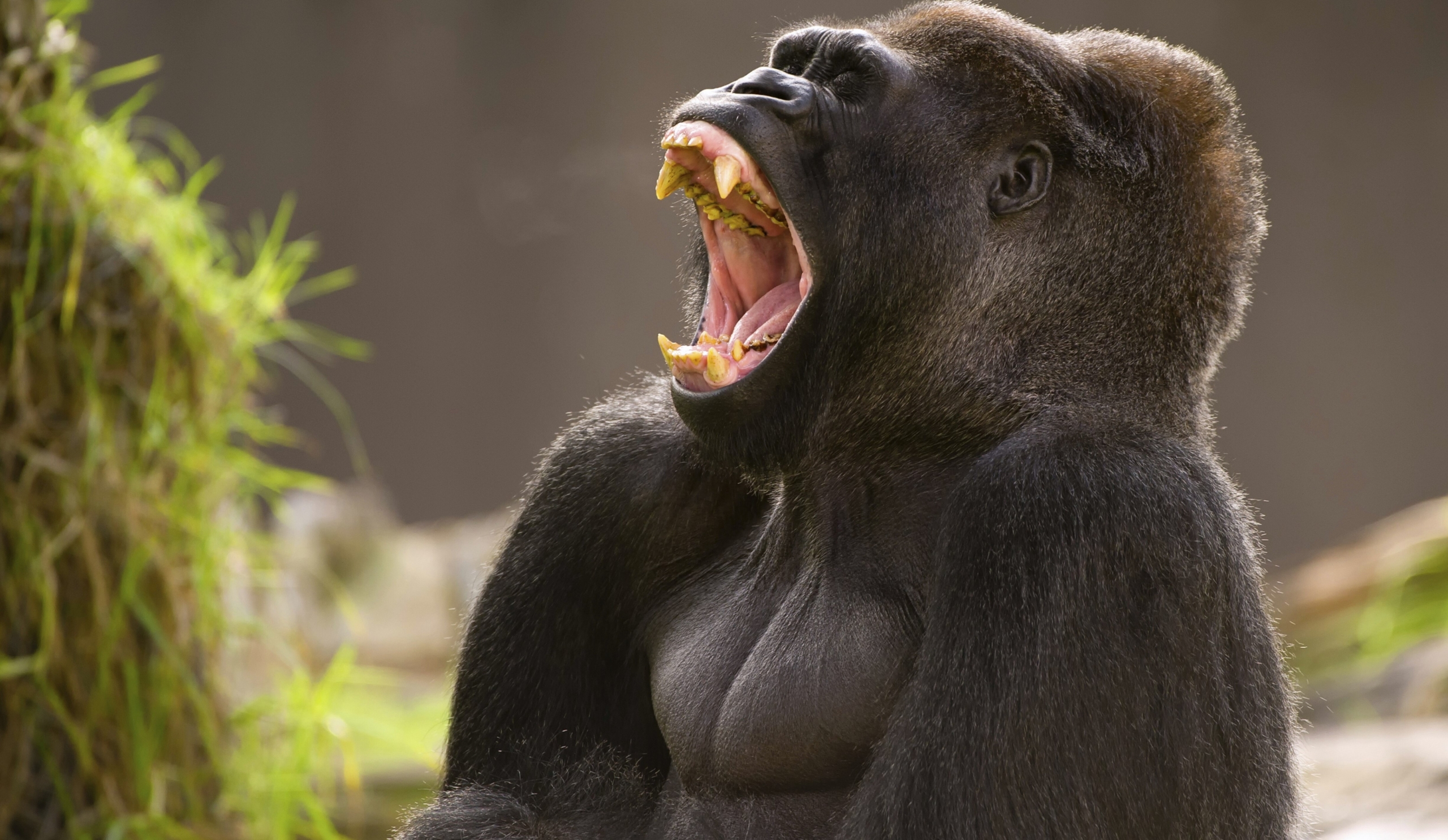
Their skin remains tough yet flexible. A thick layer of fat beneath the skin adds protection during fights with rival males.
Their iconic silver patch along the back appears when they mature, usually around twelve years of age. This silver fur signals leadership readiness within gorilla societies.
The Role of the Silverback in the Troop
Silverbacks lead troops by commanding respect through strength and strategic intelligence. A troop typically includes several adult females, their young, and sometimes adolescent males known as blackbacks.
Leadership demands vigilance. The silverback decides when to move, when to feed, and when to seek shelter. It also defends the troop from predators and rival gorillas.
Silverbacks use vocalisations, body postures, and facial expressions to manage group dynamics. Chest beating, often misunderstood, serves as a communication tool rather than an open challenge.
Habitat Preferences and Conservation Zones
Silverback gorillas thrive in protected areas like Volcanoes National Park in Rwanda, Bwindi Impenetrable Forest in Uganda, and parts of the Congo Basin. These regions provide thick foliage, abundant food sources, and limited human interference.
Silverbacks favour fruiting trees, tender shoots, and leafy plants. Seasonal changes in food availability often influence troop movement and home range size.
How Strong Is a Silverback Gorilla?
The strength of a silverback gorilla begins with its unique muscular and skeletal adaptations. Their muscles are denser than human muscles, producing more force without gaining excessive bulk.
Silverbacks possess long, thick arms built for pulling, lifting, and climbing. Bone structures in the wrists and shoulders allow them to transfer explosive power with remarkable efficiency.
Muscle fibres in silverbacks contract faster and stronger than those in human bodies. This adaptation equips them to move heavy obstacles, break branches, and dominate rival males when necessary.
Ligaments and tendons surrounding their joints also absorb high-impact forces, helping them deliver powerful strikes without risking frequent injury.
Measured Indicators of Strength
Estimates suggest a silverback can lift 1,800 pounds on a bench press equivalent. That is almost 820 kgs, on a BENCH PRESS!!!!!. Their pulling strength far exceeds what even elite human athletes can achieve.
Silverbacks can tear small trees out of the ground with one hand. Researchers in field conservation zones have documented gorillas moving objects weighing several hundred pounds with ease.
Bite force measurements record pressures of approximately 1,300 pounds per square inch. For comparison, this level of force exceeds that of a lion and matches or surpasses that of many large predators, like bears.
Striking force remains harder to quantify. However, based on muscle mass, arm length, and observed impacts, experts estimate a silverback’s punch could deliver over 1,000 pounds of force.
For context, if you got punched by a mature silverback, it would feel like being hit with a 450kg weight.
Power in Motion
Despite their bulk, silverback gorillas move with astonishing agility. They sprint short distances at speeds of up to 25 miles per hour.
Climbing trees, traversing forest floors, and navigating steep hills all fall within their daily activity patterns. Their physical conditioning supports both strength and high levels of endurance.
Energy conservation strategies allow them to exert extreme force only when necessary. Most of their day involves foraging, social interactions, and minimalistic movement across familiar ranges.
During territorial disputes or protection events, silverbacks unleash their full power in rapid, controlled bursts designed to neutralise threats immediately.
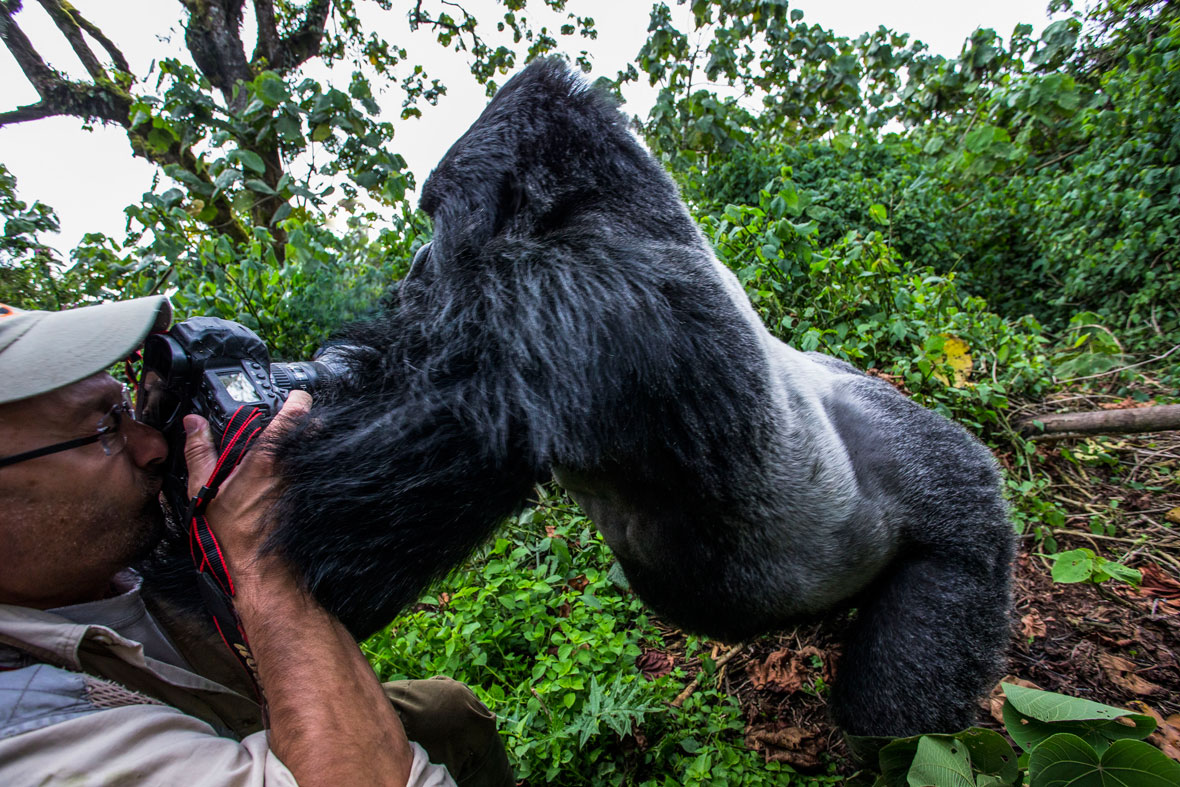
Silverback Gorilla vs Human Strength
The silverback gorilla carries muscle mass that serves direct functional purposes. Each major muscle group connects to larger, thicker bones, allowing for high-impact movement with minimal energy loss.
Human athletes train to maximise either speed or strength. The silverback naturally combines both. Its muscle-to-weight ratio dwarfs the highest achievements of human conditioning.
In practical terms, a silverback can lift, pull, and push at levels that no unassisted human could replicate. Even Olympic-level weightlifters measure far below a gorilla’s everyday power outputs.
Striking Force and Reaction Time
Measured striking forces in humans range between 400 and 1,000 pounds, depending on size, training, and technique. A silverback’s strike easily surpasses 1,000 pounds.
Unlike humans, who require training to develop coordinated strikes, silverbacks rely on natural biomechanics. They deliver devastating blows without preparation or warm-up.
Reaction time also gives the gorilla an advantage. Observations show silverbacks reacting to threats within fractions of a second, using coordinated movements that combine strength, speed, and tactical positioning.
Speed, Endurance, and Agility
Speed remains a critical factor in understanding gorilla strength. Silverbacks can sprint at approximately 25 miles per hour, covering short distances faster than most humans can react.
Their endurance within their home ranges allows them to move constantly while foraging or guarding their troops. Agility across uneven, forested ground comes naturally through learned motor patterns and anatomical design.
During tourism briefings in conservation zones, guides often stress that visitors should never run if a gorilla displays aggressive behaviour. Running triggers a chase instinct fueled by superior speed and strength.
Why the 100 men vs 1 Silverback Gorilla is a Bloodbath
The debate about whether one hundred men could defeat a silverback gorilla ignores several biological and psychological realities.
Understanding these factors highlights why the scenario ends disastrously for the men.
First, coordination collapses instantly under pressure. Humans, even in groups, rarely act with collective precision when facing an immediate and violent threat. Fear, confusion, and hesitation dominate human responses.
Meanwhile, the silverback acts decisively. Years of territorial defence and social dominance hone its instincts to identify threats and neutralise them without delay.
In close quarters, the gorilla’s physical advantages magnify. It can incapacitate multiple individuals in seconds through a combination of sheer striking force and overwhelming speed.
A strategic assault by the group would require perfect communication, bravery, and flawless execution.
History and behavioural studies suggest that such an organisation collapses when fear triggers the human fight-or-flight response.
Even if men succeeded in crowding the gorilla, every moment of physical contact favours the gorilla’s raw strength and survival instincts. Each swipe, bite, or tackle from the gorilla causes severe injuries.
Fatigue eventually affects every creature, but a silverback maintains a higher threshold than untrained humans under extreme physical stress. The group would likely break before the gorilla weakened meaningfully.
Modern wildlife professionals understand these dangers intimately. This knowledge informs the strict separation practices during gorilla trekking excursions in sanctuaries like Mgahinga, Bwindi, or Volcanoes National Park.
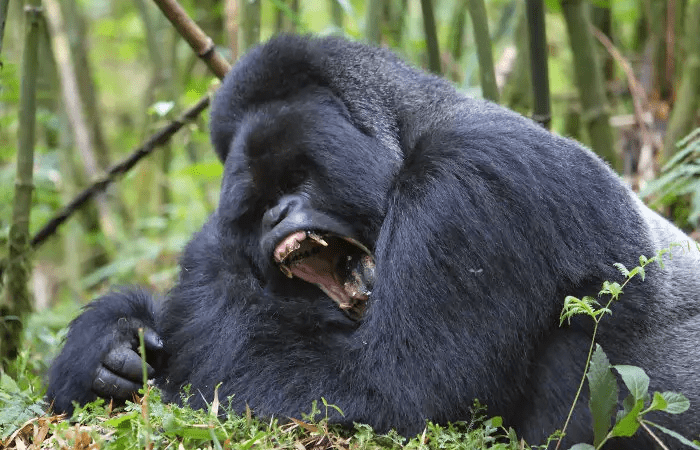
Built for Dominance
Every muscle, bone, and instinct in a silverback gorilla serves a single purpose: to dominate its environment. Every element of its body favours strength and certainty.
The silverback’s limbs move with mechanical precision. Its reactions strike without hesitation, combining speed and overwhelming force in a single motion.
Survival in the wild depends on immediate control, explosive action, and raw physical superiority. The silverback achieves this naturally, without the need for hesitation or strategy sessions.
Opponents recognise this authority instantly. Disputes are resolved through presence alone. A silverback’s posture, movement, and vocal signals carry undeniable force.
Strength defines leadership; it establishes order and protects life. Within the forest, these facts remain clear and absolute.
The silverback gorilla remains the clearest living expression of strength shaped by nature’s most unforgiving demands.







